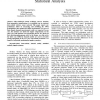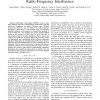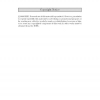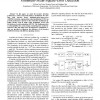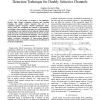133
Voted
GLOBECOM
2008
IEEE
15 years 7 months ago
2008
IEEE
—We present a blind turbo equalizer for QAM signals that exploits the statistics that a channel code imposes on the transmitted signal. The receiver is an adaptation of previous ...
95
Voted
GLOBECOM
2008
IEEE
15 years 7 months ago
2008
IEEE
—In this paper, we propose a novel channel estimation scheme for the broadcast phase of the newly invented twoway relaying technique. Instead of using pilot sequences, we exploit...
94
Voted
GLOBECOM
2008
IEEE
15 years 7 months ago
2008
IEEE
—Ultra-wideband (UWB) technique attracts attention from automotive manufacturers as a potential way to construct intra-vehicle wireless sensor network. This paper reports our pre...
107
click to vote
GLOBECOM
2008
IEEE
15 years 7 months ago
2008
IEEE
—Multi-input multi-output (MIMO) receivers have been designed and their communication performance analyzed under the assumption of additive Gaussian noise. Wireless transceivers,...
GLOBECOM
2008
IEEE
15 years 7 months ago
2008
IEEE
98
Voted
GLOBECOM
2008
IEEE
15 years 7 months ago
2008
IEEE
—In this paper, we study the iterative detection problem for a coded system with multi-ary modulation. We show that, with iterative linear minimum-mean-square-error (LMMSE) detec...
104
Voted
GLOBECOM
2008
IEEE
15 years 7 months ago
2008
IEEE
—This paper addresses the use of adaptive modulation in progressive image transmission with multiple description coding in conjunction with an Orthogonal Frequency Division Multi...
113
Voted
GLOBECOM
2008
IEEE
15 years 7 months ago
2008
IEEE
— In this paper, we propose a low-complexity iterative joint channel estimation, detection and decoding technique for doubly selective channels. The key is a segment-by-segment f...
113
Voted
GLOBECOM
2008
IEEE
15 years 7 months ago
2008
IEEE
—In order to fully utilize spectrum, auction-based dynamic spectrum allocation has become a promising approach which allows unlicensed wireless users to lease unused bands from s...
GLOBECOM
2008
IEEE
15 years 7 months ago
2008
IEEE
Abstract—We analyze the capacity of an opportunistic scheduling system in a spectrum sharing environment where multiple secondary users can share a frequency spectrum with multip...

